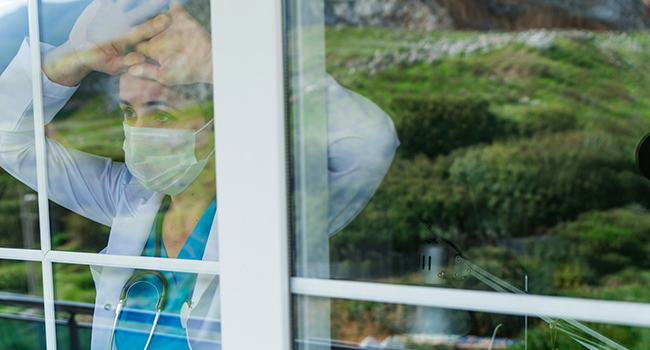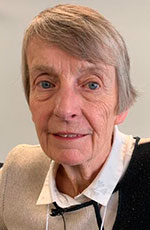The study is looking into the effectiveness of safety measures to protect the physical and mental health of Canada’s health-care workforce treating those with COVID-19.
Occupational epidemiologist Nicola Cherry, professor in the Faculty of Medicine & Dentistry, said although Canada has infection control protocols in place, they may not be completely fail-safe because infections may be missed, personal protective equipment may not be available or may be used improperly, or other control lapses may occur.
“My job is to prevent ill-health,” said Cherry. “We’re looking at the exposures people get at work and at who gets infected, and where. We need to understand better what has happened that has resulted in transmission of the virus.”
Cherry’s team received more than $1 million from a partnership of the federal government’s COVID-19 Immunity Task Force and the Canadian Institutes of Health Research, announced recently.
For the initial part of the study, Cherry’s team interviewed 5,000 nurses and physicians in four provinces – Alberta, British Columbia, Ontario and Quebec – starting in April to gauge the mental health and infection rates among those engaged in the early front-line fight against COVID-19.
Cherry said her early interpretation of the data shows a high level of anxiety and depression in all groups, with anxiety greatest among physicians and depression highest among other nurses, health-care aides and personal support workers.
As well, she found physicians are most likely to say their work hours and tasks have changed, and they don’t have access to all the required personal protective equipment.
Finally, she found all rely primarily on their families for support.
With other outbreaks, or natural disasters such as floods and fires, Cherry said the immediate trauma may be great but people can start coming to terms with it and getting on with their lives.
“I think one of the differences between this and other crises is the uncertainty around how long it is going to go on and whether we have yet seen the worst,” she said.
“And, of course, the knowledge that with one false step there is a very real possibility of infection.”
The new funding will help with two mental health followups – one now and another in the spring – as well as a pair of serology tests looking for COVID-19 antibodies.
Cherry said determination of antibody status on two occasions seven months apart will allow her team to examine its relation to past and new infection, the stability of antibodies in this population and the relationship between infection and the tasks, roles and preventive measures reported by cohort members.
As with infection, Cherry wants to continue identifying the work demands related to negative health outcomes, mental ill-health and the mitigating effects of preventive measures, as well as the support available in the family and the wider community.
Cherry said similar studies in other countries show that between four and 25 per cent of health-care workers have antibodies to COVID-19. With this study, she expects the infection rate among Canada’s health-care workers to be less than 10 per cent.
“It all depends on how many patients and what proportion of their patients have had COVID-19. Obviously, if you’re in there with very few patients, you’re not going to get affected,” she said. “It also partly has to do with the quality and the availability of the personal protective equipment.”
U of A proteomics researcher Andrei Drabovich, a researcher in the Faculty of Medicine & Dentistry, also received funding for his project, Rational Design and Standardization of Serology Diagnostics Using Immunoaffinity-Targeted Proteomics Assays.
| By Michael Brown
This article was submitted by the University of Alberta’s online publication Folio, a Troy Media content provider partner.
The views, opinions and positions expressed by columnists and contributors are the author’s alone. They do not inherently or expressly reflect the views, opinions and/or positions of our publication.


